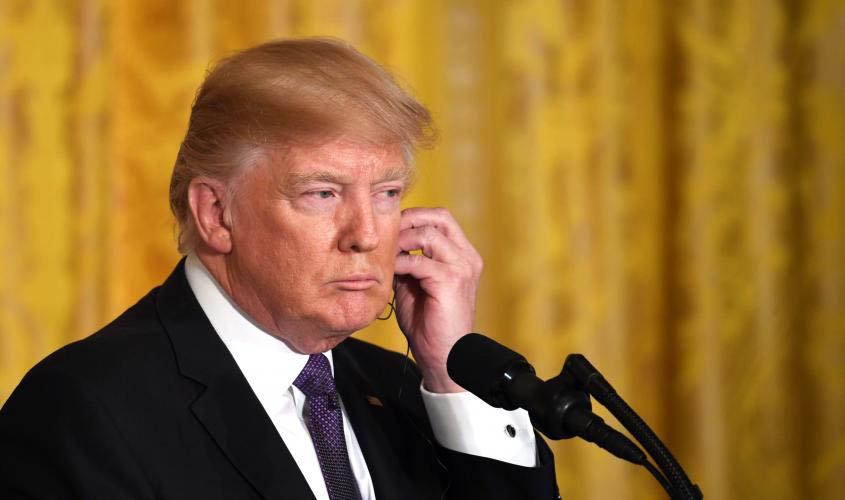 How is it possible that such a benign and beneficial economic system, which has raised the living standards of hundreds of millions across the world, could be in trouble? On both sides of the Atlantic, with the election of President Trump in the United States promising to put America First and Brexit in the United Kingdom, where many voters claimed sovereignty as their reason for voting to leave the European Union, it seems that the globalised economy is under assault. Why?
How is it possible that such a benign and beneficial economic system, which has raised the living standards of hundreds of millions across the world, could be in trouble? On both sides of the Atlantic, with the election of President Trump in the United States promising to put America First and Brexit in the United Kingdom, where many voters claimed sovereignty as their reason for voting to leave the European Union, it seems that the globalised economy is under assault. Why?
Globalisation became possible after the Second World War when a series of institutions were created, paving the way to facilitating world trade. The International Monetary Fund was formed at the Bretton Woods Conference in 1944, coming into existence a year later. The original 29 members has grown to 189, “working to foster global monetary cooperation, secure and promote financial stability, international trade and high employment around the world, at the same time reducing poverty”. Three years later, the European Recovery Programme (ERP), otherwise known as the Marshall Plan, kick-started the rebuilding of Europe after the devastation of the war. This generous aid programme contained conditions such as the lessening of interstate barriers and the dropping of many regulations. The ERP allowed the creation of the European Coal and Steel Community, the fore-runner of the European Union (EU) itself. A further institution, the World Bank, was formed in 1945 after Bretton Woods, with the twin goals of “ending extreme poverty and building shared prosperity”. Finally, in 1948 the all-important General Agreement on Tariffs and Trade, the fore-runner of the current World Trade Organisation (WTO), was signed by 23 nations in Geneva, with the purpose of “substantially reducing tariffs and other trade barriers and the elimination of preferences on a reciprocal and mutually advantageous basis”. The world now had a set of the rules of the game, which allowed globalisation to take off and it duly led to a stellar growth of exports around the world. At the same time, borders were coming down in the West, allowing the freedom of movement of people, goods, services and capital, thus promoting a greater efficiency in how resources could be allocated. Things began to move forward in the East, following Deng Xiaoping’s economic reforms in China in the 1980s. These reforms led to China joining the WTO in December 2001, when income levels there rose every decade, equivalent to every 50 years in the US, an epic transformation. Globalisation was making everyone better off, policymakers had mastered the big challenges of the global economy. So what has gone wrong?
At the turn of the millennium there was growing concern at the size of global capital flows arising from the relaxation of capital and exchange controls. For example, foreign holding of international capital as a share of the world’s activity had risen alarmingly from about 25% in 1980 to 200% in 2007, just before the global financial
So does this mean that globalisation has come to a halt? Fortunately for those believers in multilateralism, China may be coming to their rescue. With the US turning inward, with Trump withdrawing from the Trans-Pacific Partnership and pledging to re-negotiate the North American Free Trade Agreement, which he called the “worst trade deal maybe ever signed anywhere, but certainly ever signed in this country”, Beijing appears committed to preserving an open global system. Earlier this year at Davos, President Xi Jinping reaffirmed China’s commitment to globalisation, citing his sponsoring of numerous economic activities, including the Asian Investment Infrastructure Bank, which 57 countries joined despite opposition from Washington, the Belt and Road Initiative and the New Development Bank. As such, China appears firm on filling the void left by the US, although if the latter turns to protectionism, even as the world’s second largest economy, it is not clear if China’s $12 trillion economy is large enough to support global growth alone. This supports the thesis that India with its much younger population than China’s, due to the latter’s one-child policy, should encourage the resolution of the difficulties between the two countries so that they could work together to develop a “regional” globalisation. The potential for trade growth could be enormous, especially if this partnership were to be extended to include countries from Asia into Africa. The result would be an India not only becoming the biggest population in the world in the near future, but also becoming considerably richer than it would be otherwise. This is a huge opportunity which would turn the current hiatus in globalisation into more of a pause than a cessation.
John Dobson worked in UK Prime Minister John Major’s Office between 1995 and 1998 and is presently Chairman of the Plymouth University of the Third Age.

